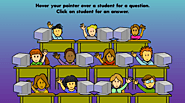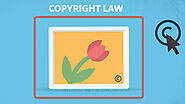-
About
- About Listly
- Community & Support
- Howto
- Chrome Extension
- Bookmarklet
- WordPress Plugin
- Listly Premium
- Privacy
- Terms
- DMCA Copyright
- © 2010-2024 Boomy Labs

 Hallie Fenton
Hallie Fenton
Listly by Hallie Fenton
Here is a list of resources for 6th-12th graders who need help identifying Plagiarism, Copyright Laws, and Fair Use. This list contains a variety of content types such as podcasts, interactive tutorials, videos, infographics, and online articles. You may use this to guide yourself through the ethical use of information or check your work to ensure you have avoided any possible infringement.

This podcasts defines plagiarism, discusses where plagiarism occurs and why plagiarism happens. It is important to understand plagiarism to avoid unintentionally stealing another person's work. When plagiarism occurs there are usually consequences that follow. You may use this resource to refresh your knowledge of the topic and identify strategies to help you avoid plagiarism.

This infographic is an easy to read guide to help you define plagiarism and avoid it. It is important for you understand that plagiarism is the act of stealing someone else's work. You may use this resource to help identify strategies to avoid plagiarism. Before submitting your work make sure that you have cross-checked your work and provided credit to others' works.

OWL Perdue is an online articles that guides you through plagiarism, how to avoid it, and how to properly cite your works. It is important to understand plagiarism, and how to give someone else's work credit. Citations may change based on the format of your assignment (MLA, APA, Chicago, ect.) You may use this guide to help you properly cite information in any written response assignment.

This video discusses both plagiarism and copyright laws. In some instances, you may avoid plagiarism but not copyright infringement. It is important to understand both topics and make sure you check the "terms of use" and have properly given credit where it is needed. You may use this resource as a review of plagiarism and copyright.

This is an interactive to help review the topic of copyright. Each student with their hand raised, asks an important question. You need to know what types of works are on the internet, and if you are free to use those resources. With information at your finger tips, it is easy to unintentionally cause copyright infringement. Click on each student to review Public Domain, Fair Use, and Copyright.

This blog post discusses the topics of copyright and plagiarism by asking some common questions other students have asked. These topics are important, so you can avoid infringements and serious consequences. You may read through this resources to further understand Copyright and Plagiarism.

This interactive tutorial provides practice for citing resources based on your paper's format (MLA, APA, Chicago, ect.). It is important to give credit to any works that you have used within your own. As you work through written responses, make sure you practice citing works. Remember, on your research papers, you must include a reference page, works cited page, or bibliography.

This video discusses Copyright, Creativity, and Fair Use. It is important to understand that you may use the works of others as long as you give them credit. All creators are entitled to have credit given to them when their works are used. You may use this video to review Copyright and Fair Use.
This infographic describes Fair Use and provides examples. Fair Use is the constitutional right to use other works without the permission of the copyright holder as long as your use of the material falls within the Four Factors of Fair Use. It is important to understand Fair Use is everywhere and impacts our daily life. Read through this infographic and jot down the 4 factors of Fair Use and ways Fair Use impacts our life.

This online article defines Fair Use and identifies its importance. As students, you may need to quote works from different sources. Fair Use allows you the chance to do this without causing any Copyright Infringement. As you work through your assignments, make the sources you choose to use fit within the 4 factors of Fair Use (Purpose, Nature, Brevity, and Effect).
